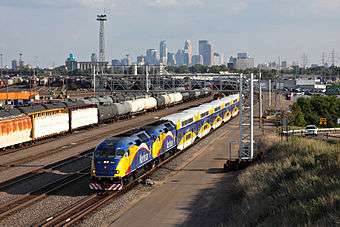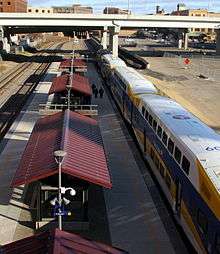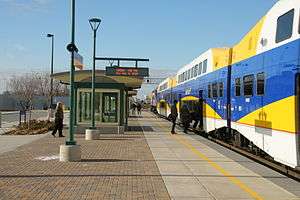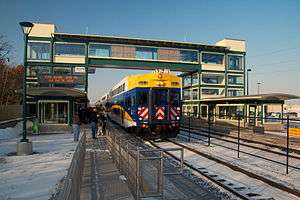Northstar Line
| Northstar Line | ||||||||||||||||||||||||||||||||||||||||||||||||||||||||||||||||||||||||||||||||||||||||||||||||||||||||||||||||||||||||||||||||||||||||||
|---|---|---|---|---|---|---|---|---|---|---|---|---|---|---|---|---|---|---|---|---|---|---|---|---|---|---|---|---|---|---|---|---|---|---|---|---|---|---|---|---|---|---|---|---|---|---|---|---|---|---|---|---|---|---|---|---|---|---|---|---|---|---|---|---|---|---|---|---|---|---|---|---|---|---|---|---|---|---|---|---|---|---|---|---|---|---|---|---|---|---|---|---|---|---|---|---|---|---|---|---|---|---|---|---|---|---|---|---|---|---|---|---|---|---|---|---|---|---|---|---|---|---|---|---|---|---|---|---|---|---|---|---|---|---|---|---|---|---|
 | ||||||||||||||||||||||||||||||||||||||||||||||||||||||||||||||||||||||||||||||||||||||||||||||||||||||||||||||||||||||||||||||||||||||||||
 | ||||||||||||||||||||||||||||||||||||||||||||||||||||||||||||||||||||||||||||||||||||||||||||||||||||||||||||||||||||||||||||||||||||||||||
| Overview | ||||||||||||||||||||||||||||||||||||||||||||||||||||||||||||||||||||||||||||||||||||||||||||||||||||||||||||||||||||||||||||||||||||||||||
| Type | Commuter rail | |||||||||||||||||||||||||||||||||||||||||||||||||||||||||||||||||||||||||||||||||||||||||||||||||||||||||||||||||||||||||||||||||||||||||
| System | Metro Transit (Metropolitan Council) | |||||||||||||||||||||||||||||||||||||||||||||||||||||||||||||||||||||||||||||||||||||||||||||||||||||||||||||||||||||||||||||||||||||||||
| Status | Operational[1] | |||||||||||||||||||||||||||||||||||||||||||||||||||||||||||||||||||||||||||||||||||||||||||||||||||||||||||||||||||||||||||||||||||||||||
| Locale | Minnesota (Minneapolis, Hennepin County, Anoka County and Sherburne County) | |||||||||||||||||||||||||||||||||||||||||||||||||||||||||||||||||||||||||||||||||||||||||||||||||||||||||||||||||||||||||||||||||||||||||
| Termini |
Target Field Big Lake | |||||||||||||||||||||||||||||||||||||||||||||||||||||||||||||||||||||||||||||||||||||||||||||||||||||||||||||||||||||||||||||||||||||||||
| Stations | 7 stations in operation, 4 proposed | |||||||||||||||||||||||||||||||||||||||||||||||||||||||||||||||||||||||||||||||||||||||||||||||||||||||||||||||||||||||||||||||||||||||||
| Daily ridership | 3,100 (Q3 2013)[2] | |||||||||||||||||||||||||||||||||||||||||||||||||||||||||||||||||||||||||||||||||||||||||||||||||||||||||||||||||||||||||||||||||||||||||
| Train number(s) |
1900–1913 (weekday), 1930–1935 (Saturday), 1940–1945 (Sunday) | |||||||||||||||||||||||||||||||||||||||||||||||||||||||||||||||||||||||||||||||||||||||||||||||||||||||||||||||||||||||||||||||||||||||||
| Operation | ||||||||||||||||||||||||||||||||||||||||||||||||||||||||||||||||||||||||||||||||||||||||||||||||||||||||||||||||||||||||||||||||||||||||||
| Opened | November 16, 2009[3] | |||||||||||||||||||||||||||||||||||||||||||||||||||||||||||||||||||||||||||||||||||||||||||||||||||||||||||||||||||||||||||||||||||||||||
| Owner |
BNSF Railway (infrastructure) Metropolitan Council (rolling stock) | |||||||||||||||||||||||||||||||||||||||||||||||||||||||||||||||||||||||||||||||||||||||||||||||||||||||||||||||||||||||||||||||||||||||||
| Operator(s) |
BNSF Railway (locomotives) Metropolitan Council (train staff) | |||||||||||||||||||||||||||||||||||||||||||||||||||||||||||||||||||||||||||||||||||||||||||||||||||||||||||||||||||||||||||||||||||||||||
| Rolling stock |
Motive Power MP36PH-3C (engines), Bombardier BiLevel Coach | |||||||||||||||||||||||||||||||||||||||||||||||||||||||||||||||||||||||||||||||||||||||||||||||||||||||||||||||||||||||||||||||||||||||||
| Technical | ||||||||||||||||||||||||||||||||||||||||||||||||||||||||||||||||||||||||||||||||||||||||||||||||||||||||||||||||||||||||||||||||||||||||||
| Line length | 40 miles (64 km) | |||||||||||||||||||||||||||||||||||||||||||||||||||||||||||||||||||||||||||||||||||||||||||||||||||||||||||||||||||||||||||||||||||||||||
| Track gauge | 4 ft 8 1⁄2 in (1,435 mm) standard gauge | |||||||||||||||||||||||||||||||||||||||||||||||||||||||||||||||||||||||||||||||||||||||||||||||||||||||||||||||||||||||||||||||||||||||||
| Operating speed |
83 mph (134 km/h) governed maximum[4] 79 mph (127 km/h) legal limit 47 mph (76 km/h) average | |||||||||||||||||||||||||||||||||||||||||||||||||||||||||||||||||||||||||||||||||||||||||||||||||||||||||||||||||||||||||||||||||||||||||
| Route number | 888 | |||||||||||||||||||||||||||||||||||||||||||||||||||||||||||||||||||||||||||||||||||||||||||||||||||||||||||||||||||||||||||||||||||||||||
| ||||||||||||||||||||||||||||||||||||||||||||||||||||||||||||||||||||||||||||||||||||||||||||||||||||||||||||||||||||||||||||||||||||||||||
The Northstar Line (reporting mark MNRX) is a commuter rail route in the US state of Minnesota. Northstar runs 40 miles (64 km) from Big Lake to downtown Minneapolis at Target Field using existing track and right-of-way owned by the BNSF Railway. Passenger service began on November 16, 2009.[1][3] The rail line serves part of the Northstar Corridor between Minneapolis and St. Cloud. Planning for the line began in 1997 when the Northstar Corridor Development Authority (NCDA) was formed.[5] The corridor is mostly served by Interstate 94 and U.S. Highway 10.
Background
The platforms at Target Field under construction in 2009. |
The route was initially designed to run the full distance between Minneapolis and Rice, Minnesota, near St. Cloud. The project was counting on federal funding for half of its construction costs. The estimated ridership for the full route was not high enough to qualify for that much needed federal funding.
When the line was first proposed, then-Governor Jesse Ventura was an early advocate and convinced some people to come around to his point of view.[6] Ventura's successor, Governor Tim Pawlenty, did not initially support it. He changed his mind after MnDOT determined that a scaled-back version of the line would qualify for federal funding.
The 2004 Minnesota Legislative session did not pass a bonding bill, which meant a lack of funds for initial project work. Some counties in the area and the Metropolitan Council came up with matching funds to allow funding from the United States federal government to continue.
During the 2005 state legislative session, a bonding bill including $37.5 million of funding for the proposed project was passed. The bill was signed on April 11, 2005, by Governor Tim Pawlenty at the site of the Riverdale station in Coon Rapids, Minnesota.[7] The 2006 state legislature, along with city, county and federal governments, provided funding to complete the corridor to Big Lake.[8]
Construction began on the maintenance facility near Big Lake station and on the Blue Line light rail extension in September 2007, before full funding for the line had been secured.[5] On December 11, 2007, U.S. Deputy Secretary of Transportation Thomas Barrett met with Governor Pawlenty in Anoka County and officially signed a Full Funding Grant Agreement of $156.8 million, nearly half of the funding for the $317 million, 40-mile (64 km) line from Minneapolis to Big Lake. The money enabled the release of an additional $97.5 million in state bonding money set aside for the project.[9][10]
The federal government paid $156.8 million, the state paid $98.6 million and the Anoka County Regional Rail Authority pledged $34.8 million. The remaining partners were Sherburne County Regional Rail Authority ($8.2 million), Hennepin County Regional Rail Authority ($8 million), the Metropolitan Council ($5.9 million) and the Minnesota Twins ($2.6 million, for the station improvements under the new Target Field where the Minneapolis station was constructed).[9] Of the $317 million total, $107.5 million went to paying BNSF for a perpetual easement for track rights and facilities along the line and to pay the BNSF employees that operate the trains. The operating budget for the first full year of service, 2010, was $16.8 million.[11]
Construction and operation

The Minnesota Department of Transportation (Mn/DOT) and the Northstar Corridor Development Authority (NCDA) studied options for development of the corridor to handle the increasing commuter load and felt that a commuter rail line was the best option. It was expected to cost about US$265 million in 2008 dollars, estimated to be less than one-third the cost of upgrading existing highways,[12][13] though the cost would later climb to $317 million.[11] Because almost all of the route being used already existed, the investment mostly went into building new stations, upgrading track, enhancing the safety of crossings, and updating signals. A significant portion of the funds were to extend the METRO Blue Line to the Target Field station on the west side of Interstate 394 and 5th Street. This terminal station is integrated into the Minnesota Twins' new ballpark, Target Field, which opened in March 2010.
The line has six trains running in the morning and evening rush hour periods, and limited service on weekends and holidays. Bus feeder lines, including the Northstar Link from St. Cloud to Big Lake station,[14] bring residents along the corridor to the nearest train station. Once in downtown, commuters can walk upstairs to the METRO Blue and Green Lines, take a bus into other areas of the city, or go into one of the nearby buildings integrated into the Minneapolis skyway system. In the first year, 2010, Metro Ridership fell well short of its goal of 3,400 weekday trips from this station. Metro Transit has a goal for of 5,900 by 2030[15] intending to save those commuters 900,000 hours over the course of a year when compared to taking a dedicated bus line.[12]
Annual Ridership ( Total Trips )
| Year | Total Trips (Annually) |
|---|---|
| 2010 | 710,426 |
| 2011 | 703,427 |
| 2012 | 700,276 |
| 2013 | 787,239 |
| 2014 | 721,214 |
Ridership
The Northstar line averaged 2,157 trips per weekday in 2013.[16]
Ridership in the first 15 days averaged 2,207 per day (33,112 total), short of a goal of 2,460.[17] By the end of January 2010, goals were exceeded by 3%.[18] Ridership for 2010 was originally projected to be 897,000 though ultimately ended up at 715,000.[19] Because ridership varies significantly through the course of a year, Metro Transit's month-to-month goals are different than the yearly average goal.
Route
At Target Field Station, the parallel rail lines of the old Great Northern Railway (north side track now BNSF) and the Minneapolis and St. Louis Railway (south side track now Union Pacific) travel eastbound past the Federal Reserve Bank, the site of the old Minneapolis Great Northern Depot, across the Mississippi River on the Minneapolis BNSF Rail Bridge and then across Nicollet Island. At a wye, the route turns Northwest in the GN East side line, which then joins the parallel ex-Northern Pacific main line. The ex-Great Northern and ex-Northern Pacific lines are merged into BNSF and this is now the BNSF Northern Transcon (transcontinental) line.
The route travels north through the Northtown Classification Yards, over Interstate 694 and makes its first stop at 61st Avenue in Fridley at the yard limit of Northtown, where it enters BNSF's Staples Subdivision. The double track line continues past the current Foley Boulevard park-and-ride bus station, which is planned to be a future Northstar station and turns northwest at Coon Creek Junction, where the old GN route to Duluth (now BNSF's Hinckley Subdivision) splits off and heads straight north. The current Coon Rapids station is behind the Riverdale shopping center by Round Lake Boulevard and new stations were also built in Anoka, Elk River, and Big Lake.
The Great Northern Railway and Northern Pacific Railway had local services from Minneapolis to all of the cities currently served by Northstar up through the early 20th century. One Fridley station was about a mile north of the current stop, at Mississippi Boulevard. There possibly was a stop shared by GN and NP at Coon Creek Junction.[20] There were at least three stations built in Anoka over the years, and two stations in Elk River and Big Lake, with both cities having one stop for each railroad.[21]
Upgrades and future extension
The double-track main line between Northtown Yard in Minneapolis and Coon Creek Junction in Coon Rapids is the busiest rail corridor in the Twin Cities metropolitan area. In July 2009, before the Northstar Commuter Rail commuter line began operation, this segment had hosted 63 trains per day.[22] The Minnesota Department of Transportation would like to run more passenger trains through the corridor, including Northstar and other proposed passenger rail routes like the proposed Northern Lights Express to Duluth. A $113.4 million project to add a third main line and a new station at Foley Boulevard in Coon Rapids is planned. A $99 million grant request was filed under the American Recovery and Reinvestment Act of 2009 to cover most of the cost.[23] TIGER grants are expected to be awarded on February 17, 2010.[24]
Foley station was among cuts to the Northstar plan in 2003 while federal funding was being sought prior to construction. Despite the fact the 3,200-stall parking facility already existed (sans boarding platforms), riders would not save enough time by switching from existing bus service to rail to make the stop fit within the guidelines enforced by Federal Transit Administration's cost-effectiveness index.[25] A station in Ramsey at Ramsey Town Center was also cut prior to construction. Ramsey station construction has been fully funded, and construction began on March 27, 2012[26] and was completed on November 8.[27] The station was opened on November 14, 2012.[28]
A major obstacle to extending Northstar to St. Cloud had been the lack of double-tracked rail for nine miles (14 km) from Big Lake to Becker.[29] However, due to increased freight traffic on the line, BNSF double-tracked the corridor in 2015.[30] The Minnesota Department of Transportation says that extending Northstar would result in 1 to 1.5 million annual trips on the line. In its 2010 State Rail Plan, the agency stated an expectation of farebox recovery ratios between 70% and 111% on the full line.[31] However, the same plan estimated farebox recovery ratios of just 21% to 34% on the proposed Northern Lights Express, which in a 2007 business plan had calculated ratios of over 100%.[32]
On November 8, 2010, it was announced that the planned extension of the line to St. Cloud had been indefinitely delayed. Projected ridership is not sufficient to qualify for federal funding.[33]
Delays
Northstar operates on one of the busiest freight rail corridors in Minnesota with up to fifty freight trains per day plus the twice daily Amtrak Empire Builder. Freight traffic has increased in recent years due to the oil boom in North Dakota, with BNSF hauling the crude oil from North Dakota through the Twin Cities. This has caused severe delays for the Empire Builder and Northstar. Another cause of delays were the extremely low temperatures during the winter of 2013, which affected the speed trains could go, how long railroad crews could work outside, the locomotives, and signaling and switches.
Since the summer of 2014, BNSF has done maintenance on the tracks used by Northstar in order to increase efficiency and reduce delays for trains. Maintenance work will resume October 20 and work will be finished by the start of winter. While there will be delays for commuter trains up to 20 minutes when maintenance work resumes, Metro Transit has stated that the track work will ensure the reliability of Northstar and eliminate delays.
Fleet
The line opened in 2009 with five MP36PH-3C locomotives and seventeen Bombardier BiLevel Coach cars. Each passenger car has about 140 seats and room for 355 when full with standees. The coaches have two doors on either side.[34] Upon the opening, Metro Transit immediately announced that a sixth locomotive was being acquired from the Utah Transit Authority's FrontRunner service in the Salt Lake City area and a lease agreement was soon signed.[17] Typical weekday operation requires five trains, each consisting of one locomotive and three or four coaches. A single train is used for weekend service, making three round trips each day. The platforms are only designed for five-car trains, so longer trains would require additional construction.
Metro Transit did begin experimenting in April 2010 with six-car trains for taking riders to and from weekend Twins games at Target Field.[35] These trains overhang the platform at either end and only open one door on each of the end cars. In May, trains serving Twins games grew to eight cars, with some completely overhanging the platforms so some riders would have to board and then walk from one car to another.[36] By June, Metro Transit had decided to purchase the sixth locomotive it had leased from UTA due to high leasing costs and the need to have an extra locomotive for when others are being repaired or inspected. A $10.1 million contingency fund built into the original cost of the service provided $2.85 million for buying the locomotive and repainting it in Northstar livery.[37]
| Manufacturer | Model | Inventory | Number | Image |
|---|---|---|---|---|
| Motive Power, Inc. | MP36PH-3C | 6 | 501–505, 512 (UTA Purchase) |  |
| Bombardier Transportation | Bombardier BiLevel Coach | 12 | 701–712 |  |
| Bombardier Transportation | Bombardier BiLevel Cab Cars | 6 | 601–606 |  |
Incidents
By October 2014, there had been at least 4 deaths involving Northstar trains, with the latest being in Elk River on October 22. There have also been 2 train vs. car crashes. In October 2014, a trainset was vandalized at the maintenance facility in Big Lake, bringing the total number of incidents on the line to 7.
References
- 1 2 Hult, Karla (November 15, 2009). "Northstar Commuter Rail service officially begins Monday". kare11 News. Retrieved November 30, 2009.
- ↑ "Ridership Report Archives". American Public Transportation Association. Retrieved January 14, 2014.
- 1 2 "Minnesota's new star to begin service Nov. 16" (Press release). Metropolitan Council. August 31, 2009. Retrieved November 30, 2009.
- ↑ "Locomotive Builder". Dirty Jobs. Pilgrim Films & Television/Discovery Channel. February 2009.
- 1 2 "History of Northstar". Northstar Commuter Rail. Northstar Corridor Development Authority. 2009. Retrieved 2010-02-11.
- ↑ http://hometownsource.com/2012/08/21/northstar-remains-high-on-list-of-epic-transportation-battles-at-capitol/
- ↑ (July 2005), "City Rail briefs", Trains Magazine, p. 29.
- ↑ "Legislature passes $1 billion public works bill". Pioneer Press. 2006.
- 1 2 Paul Levy and Joy Powell (December 10, 2007). "Finally, all aboard Northstar rail". Star Tribune. Retrieved 2010-02-11.
- ↑ Paul Levy (December 11, 2007). "Northstar set to roll, but how far?". Star Tribune. Retrieved 2010-02-11.
- 1 2 Jim Foti (November 27, 2009). "Now riders and nonriders can add up value of Northstar". Star Tribune. Retrieved January 5, 2010.
- 1 2 "Why Northstar Commuter Rail?". Northstar Commuter Rail. Minnesota Department of Transportation and Northstar Corridor Development Authority. Archived from the original on June 4, 2008. Retrieved 2010-02-11.
- ↑ "Facts and Figures". Northstar Commuter Rail. Minnesota Department of Transportation and Northstar Corridor Development Authority. Archived from the original on June 4, 2008. Retrieved 2010-02-11.
- ↑ "Northstar Link Commuter Bus". CatchTheLink.com. Northstar Corridor Development Authority, Sherburne County, Stearns County. Retrieved 2010-02-11.
- ↑ "Northstar facts and funding". Metro Transit. Retrieved 2010-02-11.
- ↑ http://www.metrotransit.org/metro-transit-2013-ridership-increases-to-814-million. Missing or empty
|title=(help) - 1 2 Bob von Sternberg (December 10, 2009). "Northstar ridership below Metro Transit goals". Star Tribune. Retrieved 2009-01-19.
- ↑ Article does not clearly state whether these were December 2009 or January 2010 figures. Cory Kampschroer (February 6, 2010). "Metro Transit Ridership Is Dropping". WCCO.com. Retrieved 2010-02-11.
- ↑ "Northstar commuter ridership falling below forecast". Trains Magazine. December 6, 2010. Retrieved December 7, 2010.
- ↑ Dan West. "Anoka County Minnesota Railroad Stations". Minnesota Railroad Stations Past and Present. Retrieved 2010-02-11.
- ↑ Dan West. "Sherburne County Minnesota Railroad Stations". Minnesota Railroad Stations Past and Present. Retrieved 2010-02-11.
- ↑ "Minneapolis-St. Paul Metro Area 2009 Railroad Volume and Speed Map" (PDF). Minnesota Department of Transportation. July 2009. Retrieved January 6, 2010.
- ↑ "BNSF Easement Rights and Passenger Rail Capacity Improvements" (PDF). Minnesota Department of Transportation. September 15, 2009. Retrieved January 6, 2010.
- ↑ Elana Schor (2010-02-05). "TIGER Grant Winners to be Announced By February 17". DC.StreetsBlog.org. Retrieved 2010-02-15.
- ↑ Peter Bodley (December 24, 2003). "Scaled-back Northstar is likely". Coon Rapids Herald. ABC Newspapers. Retrieved 2009-02-11.
- ↑ "Groundbreaking on Ramsey Northstar Station Starts Construction". Northstar Corridor.
- ↑ Sakry, Tammy (October 27, 2012). "Ramsey station will be ready for Northstar service Nov. 14". ABC Newspapers.com (ECM Publishers). Retrieved February 4, 2013.
- ↑ Hudson, Bill (November 13, 2012). "New Northstar Rail Station Opens In Ramsey". CBS Minnesota. Retrieved February 4, 2013.
- ↑ "Minnesota Comprehensive Statewide Freight and Passenger Rail Plan: Freight and Passenger Rail System Planning (Draft Technical Memorandum 4)" (PDF). Cambridge Systematics. August 2009. Retrieved January 6, 2010.
- ↑ "Rail Line Work, Big Lake to Becker, Is Underway". Citizen Tribune. May 2015. Retrieved February 5, 2016.
- ↑ Cambridge Systematics, Inc., Kimley Horn and Associates, Inc., and TKDA, Inc. (February 2009). "Minnesota Comprehensive Statewide Freight and Passenger Rail Plan (Final Report)" (PDF). Minnesota Department of Transportation. Retrieved 2010-02-11.
- ↑ Minneapolis-Duluth/Superior: Restoration of Intercity Passenger Rail Service Comprehensive Feasibility Study and Business Plan (ch. 1–2, ch 3, ch 4–10, appendices). Transportation Economics & Management Systems, Inc., December 2007. Accessed December 18, 2009.
- ↑ "Northstar commuter train expansion put on hold". Trains Magazine. November 8, 2010. Retrieved November 8, 2010.
- ↑ Eddie Thomas, Jim Foti, Paul Levy. "Riding the Northstar Rail". Star Tribune. Retrieved 2010-02-11.
- ↑ "Northstar rail line to alter its schedule". April 17, 2010. Retrieved 2010-04-20.
- ↑ wleif (May 22, 2010). "Northstar Twins". Flickr.com.
- ↑ Peter Bodley (June 2, 2010). "Northstar Commuter Rail adds locomotive". Coon Rapids Herald. ABC Newspapers. Retrieved April 27, 2011.
External links
| Wikimedia Commons has media related to Northstar Commuter Rail. |
| ||||||||||||||||||||||||||||||||||
| |||||||||||||||||||||||||||||||||||||||||||||||||||||||||||||||||||||||||||||||||